My weekly potpourri gathered from the archives features... test photos all taken by my new pocket camera, a 16.1 mpx Canon PowerShot SX 700 HS with 30X optical zoom (450mm equivalent). I am seriously considering leaving my big heavy DSLR rig at home on my next travel experience. Most were hand-held, and a few used a monopod. As the moon photo demonstrates, the image stability feature is excellent. Wish me luck!
To compare the images of the pocket camera with those of my DSLR Canon 60D with 420 mm f/5.6 lens, I rigged up this monopod so that both photos could be taken at nearly the same time and at the same distance. Not surprisingly, the DSLR produced sharper images, but I am pleased with the results and think the SX 700 will be my only camera (besides the iPhone) during our train trip through the Canadian Rockies. The pocket camera does great landscapes.


CRITTER:
Common Ground-Dove, at a range of 65 feet (about 20 meters, Monopod), December 28, 2014:
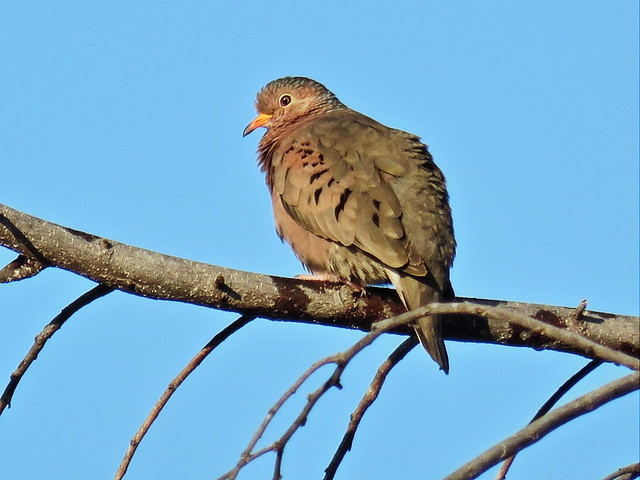
Little blue Heron (Monopod), December 18, 2014:
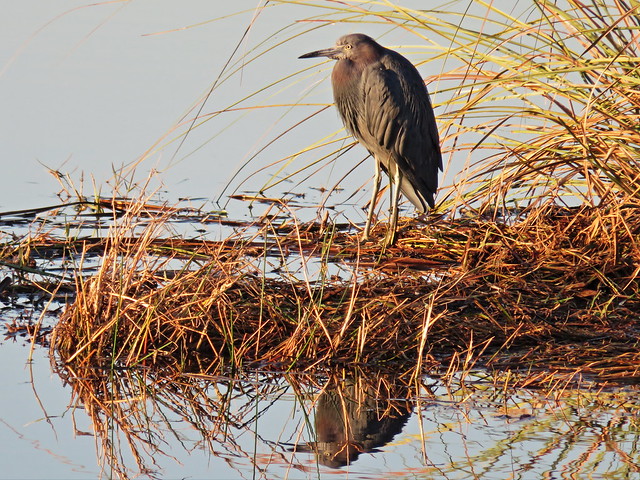
Northern Mockingbird (Hand-held) , December 18, 2014:
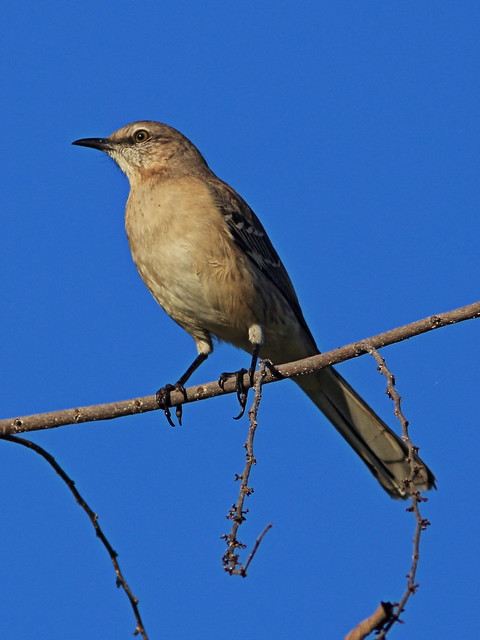
Northern Mockingbird (Hand-held, December 21, 2014:
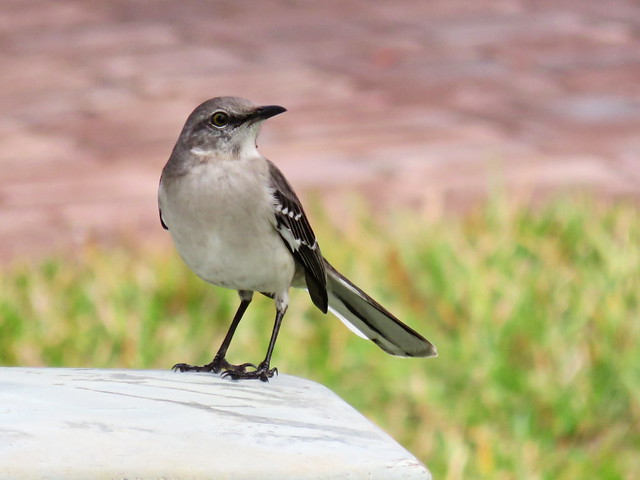
Palm Warbler at 70 feet (21 meters, Monopod), December 21, 2014:

Double-crested Cormorant (Hand-held), December 26, 2014:
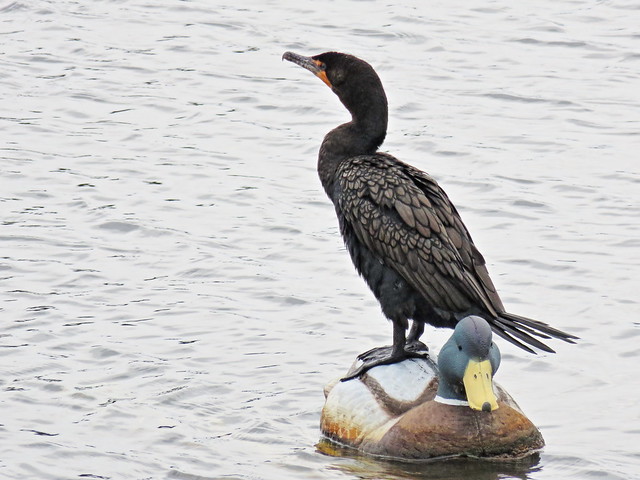
An example of the pocket camera's macro and image stabilization capabilities is this Monarch butterfly on an Ixora blossom at a range of about 12 inches (30 cm, Hand-held), January 6, 2015:

Not a critter, but I think this hand-held image of a dewdrop, less than 1 inch, only 2 cm from the front of the lens (AUTO setting) deserves honorable mention, December 16, 2014:

Linking to Misty's CAMERA CRITTERS,
Linking to Eileen's SATURDAY'S CRITTERS,
________________________________________________
FENCE:
Our subdivision's entrance gate (Hand-held, January 6, 2015):
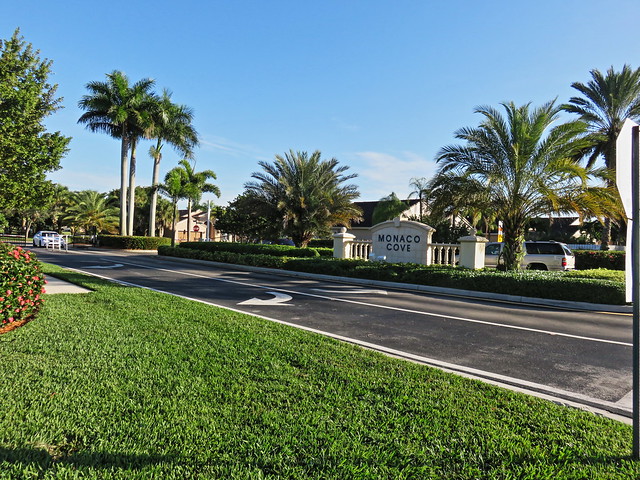
Linking to GOOD FENCES by Tex (Theresa).
________________________________________________
SKYWATCH:
Wolf Moon rising (Hand-held), January 4, 2015:

An example of a sunrise over the local wetlands, (Hand-held), January 3, 2015:
 Linking to SKYWATCH FRIDAY by Yogi, Sylvia and Sandy
Linking to SKYWATCH FRIDAY by Yogi, Sylvia and Sandy
________________________________________________
REFLECTION:
Great Egret (Monopod) , December 28, 2014:

Linking to WEEKEND REFLECTIONS by James
________________________________________________
Please visit the links to all these memes to see some excellent photos on display
________________________________________________
How does a simple point-and-shoot pocket zoom camera compare with a DSLR and telephoto lens for wildlife photography? I already know that a tiny lens system and small sensor cannot provide an image as sharp or as bright as that of the larger camera.
When we fly between our homes in Illinois and Florida I always bring my camera and gear, which fills a standard carry-on suitcase. Quite heavy, it is a chore to lift into the overhead baggage compartment. I really don't mind going to all the trouble packing and unpacking, as we usually remain at either location for several weeks.
When taking a field trip which is designed to enjoy the wildlife, while it gets that perfect photo, a big camera can also get in the way. Even at home this arrangement can be somewhat unwieldy. When an unusual bird appears in our back yard, by the time I rush to retrieve and set up my camera it may be too late for a shot.
I thought about purchasing a second, smaller camera that I could carry on my pocket, one with respectable optical zooming power. It probably would not be useful for small creatures or at a great distance, but good enough to capture large birds or mammals, habitats and landscapes. Macro capabilities for flowers and insects mandatory.
An upcoming rail trip through Canadian Rockies spurred me to research the latest pocket cameras, and I settled on the Canon PowerShot SX700 HS. I still have no idea of what all those numbers and letters mean. My choice was based on the camera's features and multiple reviews thereof.
My big Canon 60D DSLR usually is fitted with a fixed 420 mm f/5.6 lens system. The SX700 sports a 30 power optical zoom, which produces the equivalent of a 450 mm lens on a 35 mm film camera. Out of the box, I ran a few tests at maximum zoom under varied lighting conditions.
The first subject for my new camera was a Killdeer at the side of the entrance drive into nearby Chapel Trail Nature Preserve as we waited for the gates to open. The bird was badly back-lit and only about 20 feet away, so its image filled the frame of the fully-extended lens. This was my first hand-held wildlife shot with my new camera just as it came out of the camera, a bit dark and badly shadowed:
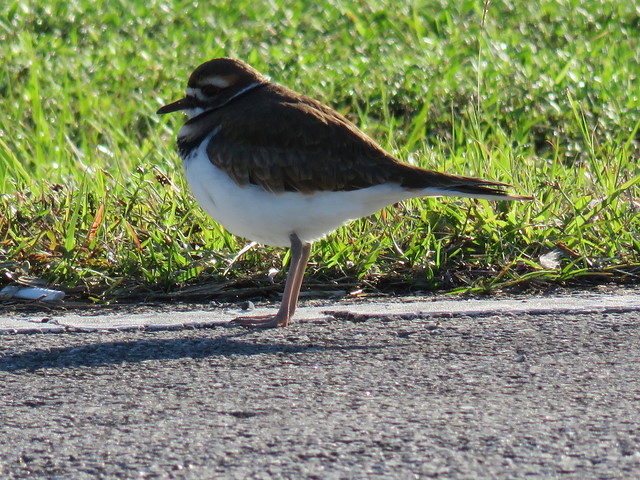
I processed the photo with Canon Digital Photography Professional (DPP) and this is the brightened and sharpened image:
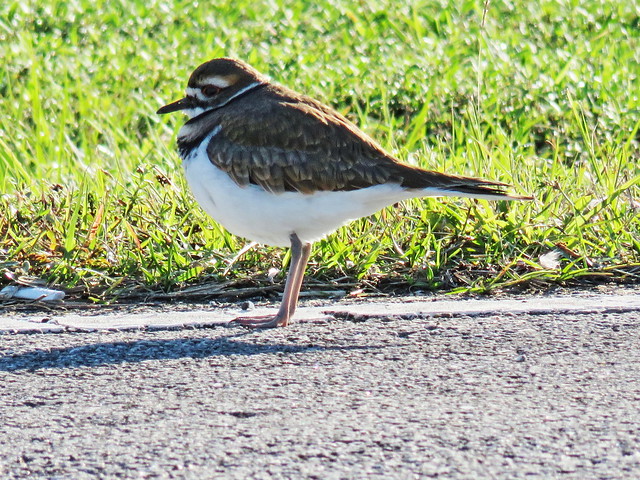
That photo seems good enough to document the sighting, and even bring back memories of the flock of a dozen Killdeers that surrounded our car that morning.
Another Killdeer was a bit more distant, perhaps at 30 feet, and in much better light. This is its uncropped but processed image:
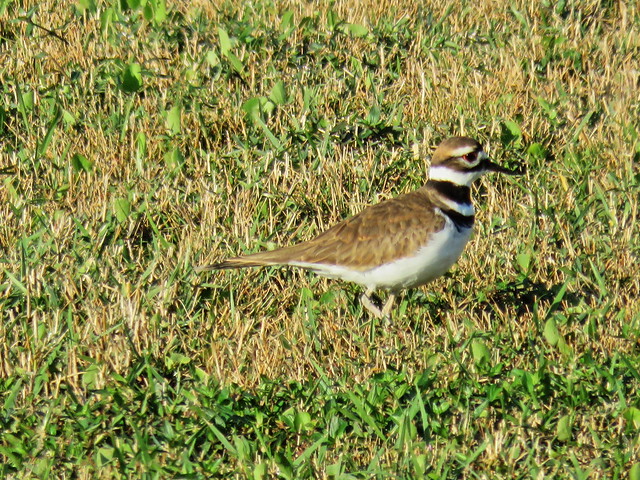
The gate was supposed to open at 8:00 AM, and we waited until 8:30 before deciding to try another venue, Armstrong Dream Park, also in Pembroke Pines. This park includes a small lake that sometimes produces good birds during migration. Since it was now the beginning of winter, birding was slow.
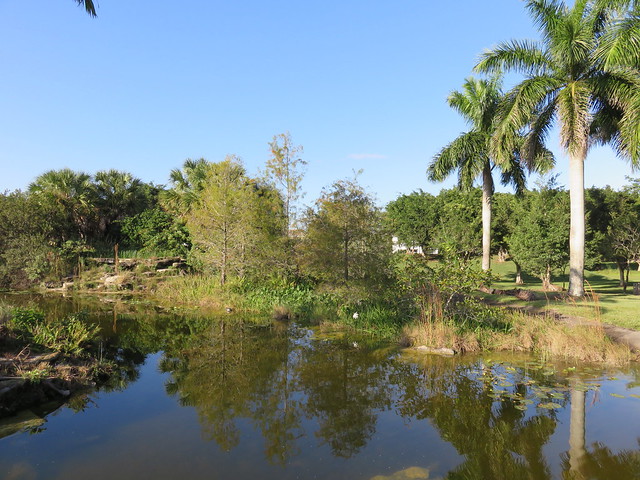
Look closely at the above photo, taken with the pocket camera without zooming in. Along the far shore, you may first see a white flower, and then to the left of center a turtle basking in the sun at the water's edge.
Here is that turtle, about 55-60 feet away, as captured by my new pocket camera, hand-held at full optical 30X (uncropped but processed normally with DPP):
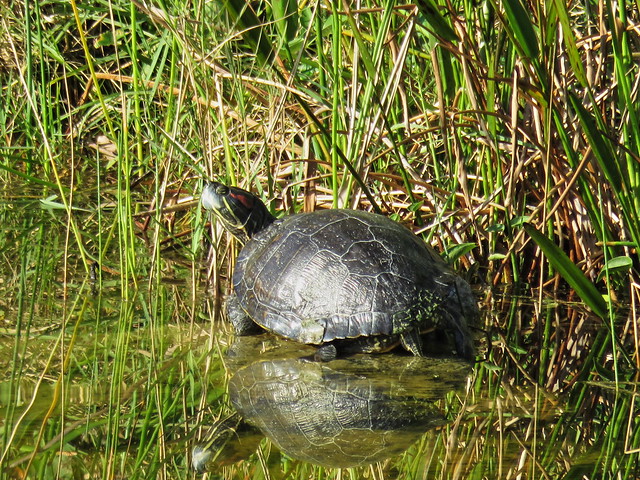
Here is the comparably processed shot from my Canon 60D DSLR with its 420mm lens system, using a monopod. The image came out smaller and with a wider format, so I cropped it slightly to provide a better comparison:
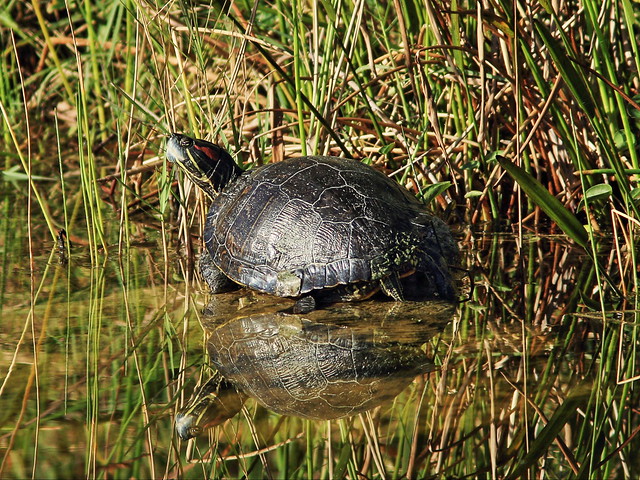
Here is the white flower, a Swamp Lily, taken with my DSLR:

On our way out in the parking lot I noticed an Osprey roosting about 225 feet away (as measured with Google Earth), atop the right-most light standard in the far distant center, protruding above the white auto (this is the un-zoomed image with the pocket camera):
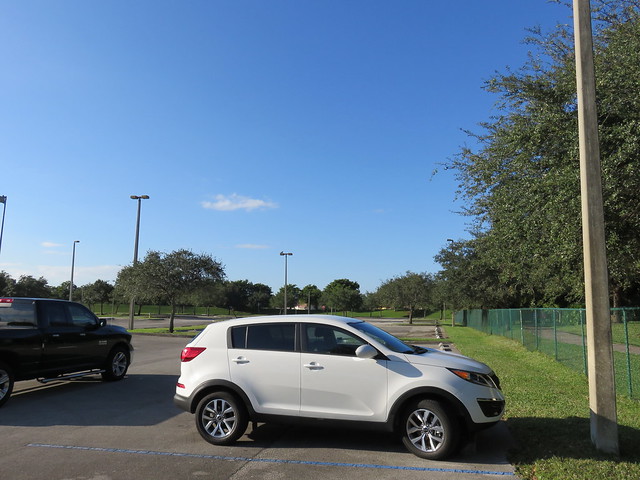
I zoomed the pocket camera up to 30 power and obtained this shot. This was the hand-held image as it appeared directly out of the camera, not cropped or processed:
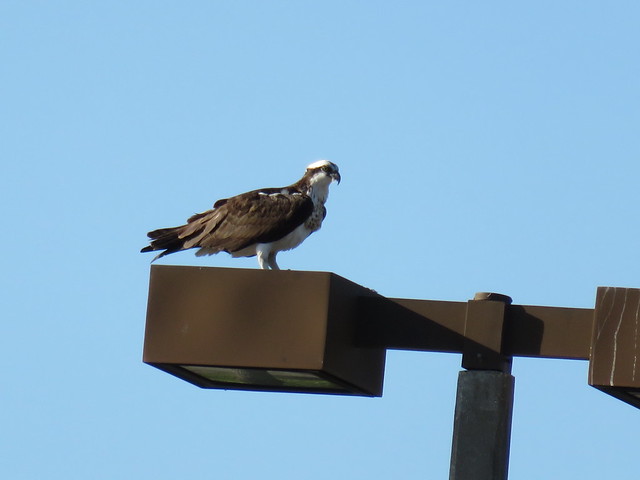
A bit of cropping and brightening produced this final product:

Finally, at Chapel Trail the next day I photographed this Great Egret with my DSLR on the monopod, at about 60 feet. I processed and trimmed both sides of the image but left it the same height to demonstrate relative size of the subject in each of the final products:
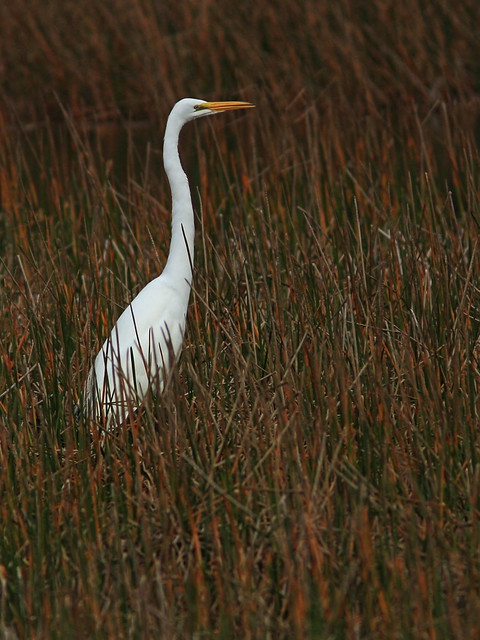
In the comparative pockt camera photo, the egret is magnified somewhat, due to the smaller sensor and the slightly greater effective magnification of its lens system at 30X (450 mm), hand-held:
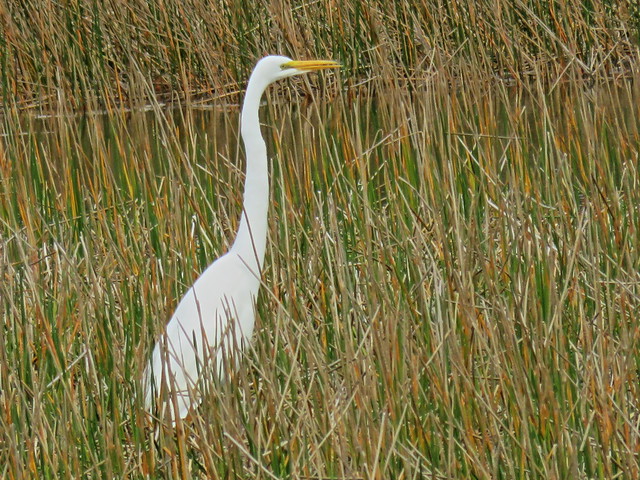
It is easy to see that the images of the pocket camera are softer, but I was rather surprised at how well the image stabilization works. Because of the small size of the camera's objective lens, the field of view is greatly restricted. At full power my hand shake caused the view to wobble wildly up and down and from side to side, sometimes entirely out of the LCD viewfinder.
In our back yard, I captured a Boat-tailed Grackle on the roof. Feather definition was pretty good:
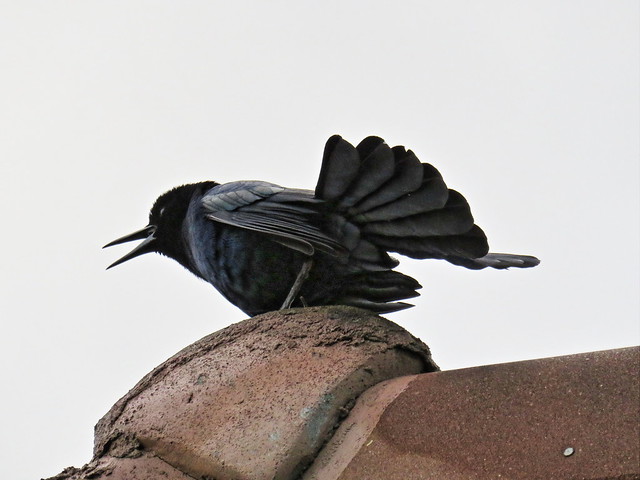
A Muscovy Duck flew over the lake and I turned quickly to catch it. Luckily it appeared in the corner of the frame and was quite clear despite the blur due to the panning. This is a 1/4 crop from the original:

I feel this little camera's performance is good enough for me to leave my "big rig" behind during our next wildlife excursion.
Subsequent sample photos:
Animated GIF which combines several photos of a Northern Mockingbird at full 30X optical zoom uncropped and not processed.



























